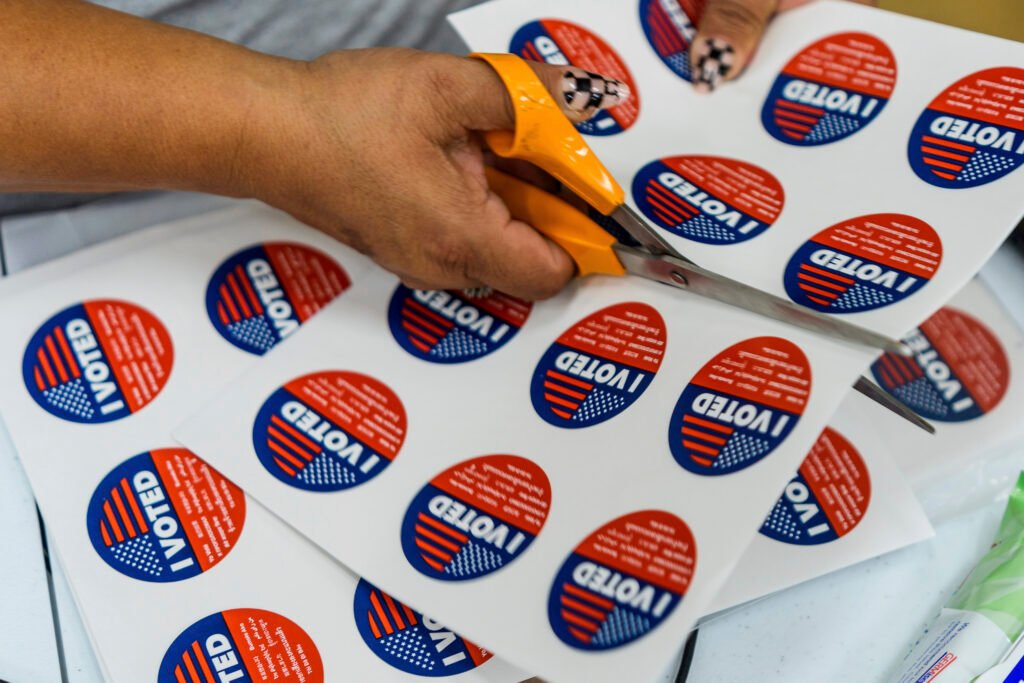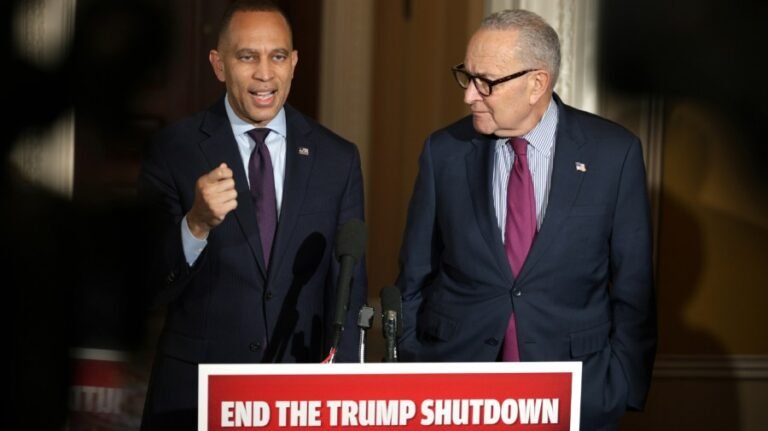
Run For Something, a progressive candidate recruitment organization, is pitching major donors on a $50 million, five-year effort to expand Democrats’ footprint in battleground and red states outside the Blue Wall — an ambitious plan for a party that’s lost ground with voters across the country.
In a donor memo shared first with POLITICO, the organization paints a dire picture for Democrats if they don’t invest in red-leaning states, and details plans to support independent candidates for the first time next year.
The memo outlines a strategy for recruiting, training and electing Gen Z and millennial candidates in a dozen states, with an eye toward increasing Democratic turnout and expanding the party’s path to 270 electoral votes. But Michigan, Wisconsin and Pennsylvania — which comprise the so-called Blue Wall that served as the backbone of the Democratic Party’s victories for decades — are not on the list.
“The core Blue Wall states, which Democrats have invested in for years, are not sufficient,” said Amanda Litman, co-founder of Run For Something. “We cannot keep hyper-targeting our work to only places that are seen as competitive right now. We have to prepare, not just for the likely fall of the Voting Rights Act, and the current round of redistricting, but what comes after in 2032. That’s why we have to expand the map.”
Litman’s group will also endorse “values-aligned” independent candidates for the first time in 2026, a recognition that in some states and districts, the “Democratic brand isn’t just bruised, but toxic,” the memo reads.
The organization raises concerns about Democrats’ chances of winning the White House and retaking control of Congress: the 2030 census projections show Democrats losing seats in blue states, due to population loss, and Republicans gaining them — with 70 percent of all down-ballot races left uncontested. That challenge is all the more urgent for Democrats as red states seek to redraw their congressional map to pad their midterm margins. And the Supreme Court is considering a case that could weaken the 1965 Voting Rights Act, which could wipe away majority-minority districts, often represented by Democrats, across the South.
Litman is urging Democrats to double down on recruiting and training candidates in battleground states, including Arizona, North Carolina, Ohio and Georgia, while reinvesting in long-abandoned states, like Utah, Nebraska, Iowa, Idaho, Texas, Florida, Louisiana and Mississippi. Based on population growth and demographic changes in these states, “these are going to open up more opportunities” for Democrats, she said.
“We should, of course, continue fighting for Michigan, Wisconsin and Pennsylvania, but if we continue to be short-termist in our deep engagement, if we don’t start building political infrastructure elsewhere, we will reach a point in 2032 where we’re starting at zero,” Litman said. “If we don’t do the work in 2026 through to 2032, then turning Texas into a battleground won’t even be an option.”
She also argued that in states without much Democratic representation, “where there is no candidate recruitment, where there is no talent building for local operatives, minimal political infrastructure,” there’s an opening to “shift the brand” if “we field candidates who are vetted, with local ties, authentic.”
“We only find those people by getting them to run for city council and school board,” Litman said.
Litman co-founded Run For Something after President Donald Trump’s first victory to build up Democrats’ bench for local races. The group focused on training and recruiting candidates for non-congressional races, including legislative, city council and county commission seats.
Over the last decade, Run For Something has helped 1,500 candidates win in 49 states and raised nearly $50 million.
Its memo argues how legislative candidates can deliver “reverse coattails” when a down-ballot candidate drives turnout to lift the top of the ticket.
One example came in Ohio’s 2024 Senate race: then-Sen. Sherrod Brown lost Franklin County, where a Run For Something-backed candidate flipped a state House seat, outperforming Brown. The organization called that “an indication that the RFS recruitment model finds the candidates that reflect their communities. … In addition to driving turnout locally, good downballot candidates can be some of the best community verifiers for top of ticket/statewide races.”






